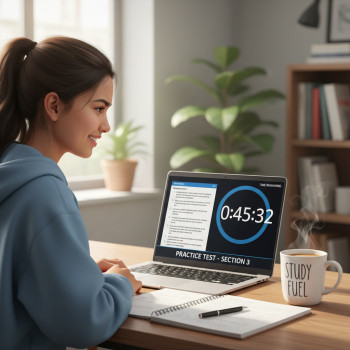Does Osaka University Require the SAT? What You Need to Know
Short answer: Osaka University does not typically list the SAT as a blanket, mandatory entrance exam for all applicants the way U.S. colleges do. Many of its undergraduate programs—especially those taught in Japanese—rely primarily on Japan’s national or university-specific entrance examinations. That said, for international applicants and some English-medium programs, standardized test scores such as the SAT can play a meaningful role in demonstrating academic readiness.
This guide unpacks what that means in plain language, walks through scenarios where the SAT can help (and where it probably won’t), and gives parents and students a realistic, step-by-step plan for using the Digital SAT to strengthen an application to Osaka University.

Why this matters: international applicants, English programs, and context
If you’re applying from outside Japan—or applying into an international or English-language program—Osaka University’s admissions committees want clear, comparable signals of your academic ability. High school grades, teacher recommendations, essays, and interviews matter a lot. But standardized scores like the SAT can add a tidy, internationally recognized data point to your file.
Important to understand:
- In Japanese-language tracks, admissions are often dominated by national or university exams. The SAT is rarely a substitute for those tests.
- In international/English-language tracks, the SAT can be useful to show quantitative and reading reasoning skills in a format many admissions officers understand.
- Some scholarship or exchange pathways may actively request SAT or ACT scores as part of a comparative review.
Two typical applicant profiles
- Domestic/Japanese-track applicant: Usually focused on national exams and specific university entrance tests. SAT is usually not central.
- International/English-track applicant: Uses a mix of high school records, English proficiency (IELTS/TOEFL), and sometimes SAT scores to give a fuller picture.
How admissions committees might view the Digital SAT
The Digital SAT (shorter, adaptive, and delivered on a device) still measures math, reading, and writing skills—skills that matter to universities everywhere. For Osaka University’s international programs, a strong Digital SAT score can:
- Provide a familiar benchmark for committees accustomed to U.S.-style credentials.
- Strengthen scholarship or merit-based application components.
- Help demonstrate readiness for an English-language curriculum (especially the Reading/Writing sections).
But remember: a single test won’t prove everything. Admissions teams weigh multiple pieces of evidence—grades, essays, project work, recommendations, and sometimes interviews—especially for selective institutions.
Checklist: Should you take the SAT for Osaka University?
Answer these quick questions to see if the SAT is likely worth your time:
- Are you applying to an English-medium bachelor’s program at Osaka University? If yes, the SAT could help.
- Do you want additional proof of quantitative and reading skills beyond your transcript? The SAT helps with this.
- Are you targeting scholarships or competitive selection tracks that list standardized testing as optional but valued? Then it’s a smart move.
- Do you already have strong international test scores (e.g., IB, AP, A-levels)? If so, the SAT may be redundant—but a strong SAT can still add polish.
Practical decision rule
If you answered yes to one or more points above, plan to take the Digital SAT at least once—ideally twice—with a focused study plan.
Application strategies by scenario
Below are practical blueprints depending on your circumstances.
Scenario A: Applying to an English-taught undergraduate program
- Take the Digital SAT and an English proficiency test (TOEFL/IELTS) unless the program explicitly waives it.
- Target a balanced score that aligns with the most selective international students: strong Math (if you’re in a STEM interest), and clear Reading/Writing evidence.
- Use the SAT to support scholarship applications or to compare favorably against applicants from other systems.
Scenario B: Applying through a Japanese-language entrance route
- Prioritize national/university entrance exams and subject mastery.
- Take the SAT only if you need an extra international credential or are applying from a system where university exam schedules conflict with testing opportunities.
Scenario C: Unsure which track you’ll use
- Take the Digital SAT early (junior year if possible). It keeps options open while you decide your application path.
Realistic score targets and how to set them
Osaka University does not publish a universal SAT cutoff because most applicants aren’t evaluated primarily on SAT scores. Instead, set targets relative to the competitiveness of the program and your overall profile.
Suggested target bands (illustrative):
| Profile | Reasonable Digital SAT Target | When this target matters |
|---|---|---|
| Competitive STEM international applicant | 700+ Math section equivalent, 650+ Reading/Writing combined | When demonstrating strong quantitative preparation and scholarship candidacy |
| Competitive humanities/social sciences applicant | 650+ Reading/Writing combined, 600+ Math | When showing strong analytical reading and writing ability in English |
| Balanced applicant with strong transcript | 600–700 overall | Supplemental credential that supports a strong GPA and recommendations |
Note: Digital SAT scoring differs from the old paper SAT in format but aims to provide comparable insight into your skills. Use College Board’s score concordance tools and official resources to interpret scores for your application timeline.
How to prepare — a pragmatic plan for students and parents
Preparation has three pillars: content, strategy, and application integration. Here’s a 16-week plan you can adapt to your starting point.
Weeks 1–4: Diagnostic and foundations
- Take a full-length Digital SAT practice test under real timing to identify strengths and gaps.
- Build a study schedule of 8–10 hours per week focusing on weak areas: math topics, reading stamina, or grammar rules.
- Start a notebook of common error types you make—this becomes gold for targeted review.
Weeks 5–10: Skills and strategy
- Focus on high-yield content: algebra, data interpretation, evidence-based reading strategies, and writing clarity.
- Practice adaptive-section strategy: understand how the Digital SAT adjusts in block difficulty and how to manage time and risk.
- Use timed sections rather than endless untimed drills; adapt to the digital interface so the platform feels familiar.
Weeks 11–14: Full practice and review
- Take two full practice tests spaced a week apart; simulate test-day conditions (no phone, quiet environment).
- Do deep reviews of the practice tests—don’t just see scores; log each missed question type and why it was missed.
Weeks 15–16: Final polish and logistics
- Taper study volume to avoid burnout—focus on light review and confidence-building strategies.
- Confirm test registration, device requirements (for international testing centers), and sending score preferences to Osaka University if needed.
How parents can support without doing the work for their student
- Help create a realistic study calendar and protect the study time from extracurricular overload.
- Offer logistical support: scheduling test dates, paying fees, and helping arrange comfortable test-day conditions.
- Encourage balanced life habits—sleep, healthy meals, and stress-management—especially in the final weeks.
Documents and administrative steps: what to prepare for Osaka University applications
Although processes vary by program, international applicants commonly prepare the following items. Treat the SAT as one optional credential among these materials.
- Official high school transcripts (translated into English if necessary)
- Proof of graduation or expected graduation
- Personal statement / essays in English (or Japanese where required)
- Letters of recommendation
- English proficiency test scores (TOEFL/IELTS) where required
- Standardized test scores (SAT, if you choose to submit them)
- Passport copy, visa documentation, and other admin paperwork
How to submit SAT scores (if you decide to)
If you choose to submit SAT results, request official score reports from the testing authority. Make sure you understand whether the specific Osaka University department or program accepts or requests scores, and if they have a preferred reporting code. If you can’t find a code, send guidance documents to admissions and ask for clarification well before application deadlines.
Common myths and pitfalls
- Myth: You must have an SAT to get into Osaka University.
Reality: Not true for most programs—research the specific program requirements. - Myth: A single high SAT score guarantees admission.
Reality: It helps, but Osaka University evaluates holistically—grades, essays, interviews matter too. - Pitfall: Waiting too late to take the SAT—plan around application deadlines and possible retests.
How Sparkl’s personalized tutoring can fit into your plan
For many families, targeted support makes the difference between an okay score and a standout one. Sparkl offers 1-on-1 guidance, tailored study plans, expert tutors, and AI-driven insights that help students focus on the precise skills they need to raise their score efficiently. If you’re balancing a rigorous school schedule and application work, a focused tutor from Sparkl can map your weekly priorities, simulate test conditions, and refine your essay narrative to match the academic strengths your SAT demonstrates.
Examples of how Sparkl can help:
- Custom study timetable that respects school exams and extracurriculars.
- Weekly diagnostic checks with a tutor who tracks progress on specific question types.
- Targeted writing workshops to connect SAT writing strengths with application essays.
Sample timeline for an international applicant
| When | Action |
|---|---|
| 12–18 months before application | Research Osaka University programs, note application deadlines, and plan testing timeline. |
| 9–12 months before | Take practice Digital SAT; decide if SAT is needed; begin formal prep if yes. |
| 6–9 months before | Take official Digital SAT; start drafting essays and securing recommendations. |
| 3–6 months before | Optional SAT retake for score improvement; finalize application materials. |
| Application deadline | Submit completed application with test scores and required documents. |
Sample application strategy: combining the SAT with other strengths
Imagine two applicants to the same international program:
- Student A: Top national exam scores, modest English proficiency scores, no SAT. Admissions committee sees strong local credentials but wonders about English classroom readiness.
- Student B: Similar academic record but submits a strong Digital SAT (especially Reading/Writing) and a solid TOEFL score. Admissions sees clearer evidence B will thrive in an English curriculum.
In this example, Student B’s SAT acts as a clarifying data point that reduces uncertainty for the committee. That’s precisely the strategic value standardized tests can offer when other elements leave questions.
Final checklist before you hit submit
- Confirm the program’s exact requirements for international applicants (language and test requirements).
- Decide whether SAT submission strengthens your application; if yes, ensure scores are sent officially and on time.
- Match your testing timeline to Osaka University’s deadlines—account for score reporting lag.
- Polish essays so your SAT performance and academic story align—Sparkl tutors can help refine this connection.
Closing thoughts: the SAT is a tool, not a verdict
Applying to Osaka University is an exciting step. For most applicants, the SAT is optional—it can be a helpful tool when used strategically, especially for international or English-language program applicants. It won’t replace your transcript, essays, or personal story, but it can round out an application and reduce uncertainty for admissions committees evaluating students from diverse educational systems.
If you’re unsure where to start, take one careful practice test early, map the deadlines, and use that data to decide whether the Digital SAT belongs in your plan. And if you want structured, efficient preparation that fits into a busy high school life, consider tailored help—Sparkl’s one-on-one tutoring, targeted study plans, and data-driven coaching make it easier to use the SAT to your advantage without burning out.

Good luck on your journey—Osaka is a vibrant place of learning, and with careful planning and honest preparation, you can put forward an application that shows who you really are, both inside and outside the classroom.

















No Comments
Leave a comment Cancel